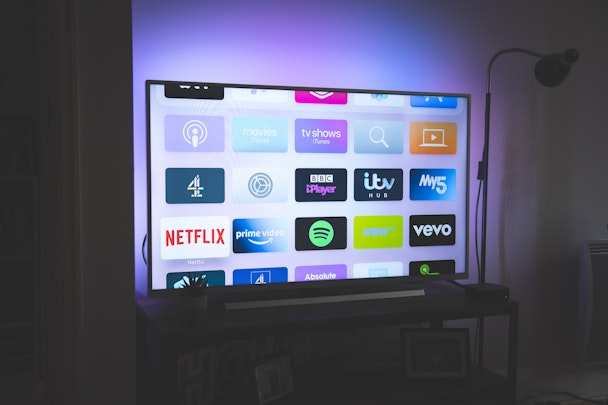How important is standardization to evolving the CTV market?
The growth of the CTV market indicates that advertisers are harnessing the opportunity to reach engaged viewers with relevant messaging. But if standardization is key to building brands’ trust and encouraging further investment, what still needs to be done? For The Drum's Future of TV initiative, IAB UK members discuss how standardization is evolving within the CTV market and the difference it will make.

For viewers, the rise of connected TV means one thing - watching brilliant content when and how they want it, supported by relevant advertising. As a result, there is a wealth of ad-funded streaming services that are catering to the UK’s huge appetite for stories that entertain, intrigue and captivate. The growth of the market indicates that advertisers feel similarly about the CTV opportunity, but - if standardization is key to building brands’ trust and encouraging further investment - what still needs to be done?
Earlier this year, we worked with our members in the CTV space to release a glossary of CTV definitions, ensuring that a shared language is being used across the market. But how can this be built on? We’ve spoken to some of our CTV members to understand how standardization is evolving with the CTV market and the difference it will make.
Sarah Botherway, director, partner development, Index Exchange
In order to maximize the efficiency and effectiveness that programmatic affords in CTV, the solutions tech partners provide must account for the unique intricacies of TV campaigns as well as the legacy advertising models central to UK broadcast media campaigns. This complexity has been part of the reason why standardization has been so difficult until now.
But while the context of CTV is unique, it requires many of the same solutions as mobile and display - like transparency, ensuring secure supply chains, and eliminating fraud. As we start to provide the tools that guarantee a safe marketplace to sell fraud-free inventory, media buyers will be able to target preferred viewers and measure campaign effectiveness - not only on TV, but across devices, paving the way for true omnichannel campaigns. By achieving this adaptability, CTV will be able to scale, changing TV in the process.
Sophie Lee, sales director, Quantcast
The progress towards standardization in the CTV sector is slow and steady but things are moving in the right direction. The measurement conundrum we’re faced with is pivotal as it impacts how fast CTV can grow. As marketers, we’re constantly asked what we can measure; be that a gross rating point (GRP), which is the legacy currency of linear TV, or a viewable impression which is sought after by digital marketers to verify that their ad was seen. It’s clear that stakeholders want to work with currencies that match what they are accustomed to planning for in existing channels.
Jaidev Kakar, director, advertiser solutions CTV / OTT (EMEA) at PubMatic
We need to make it easy for brands to transition from traditional to addressable ads and for new, smaller brands to enter the space. In the short-term, we need to solve a few things. Firstly, we need to fix the user experience by applying the correct technology solutions for the environment. This needs to be done in a unified, standardized way to foster the merge of broadcast TV and CTV and help brands transition to a new way of planning and buying. Secondly, we need to establish how to measure and attribute performance across the newly defined TV. Finally, we need to ensure that the best possible data signals exist in this ecosystem for brands and media owners to create a fair financial exchange.
Rob Cootes, senior group director, CTV & social, DoubleVerify
The industry needs to build greater trust in the CTV ecosystem by continuing to detect and protect against fraudulent traffic, boost standards in measuring CTV impressions and certify platforms that can demonstrate a proven ability to prevent fraud. Finally, continuing to build transparency into campaign reports is vital, so that buyers know exactly where campaigns are running, across all major CTV devices.
Steve Broadhead, VP, sales – EMEA, Unruly
The lack of standardization in our industry is certainly a challenge, and the fragmented nature of CTV (from varying devices – like smart TVs, gaming consoles and streaming sticks – to the increasing number of FAST- and AVOD-supported apps) further complicates matters. We’re working to help advertisers re-define how they measure success in this space – evaluating the holistic impact of an ad beyond just views and VCRs. Additionally, practices like ad podding give publishers and advertisers greater control over the ad break and provide them with a clearer set of targeting parameters (while also delivering a smoother, more tailored experience to viewers).
Content by The Drum Network member:

IAB UK
The Internet Advertising Bureau (IAB UK) is the industry body for digital advertising, committed to building a sustainable future for digital advertising. We do...
Find out more
